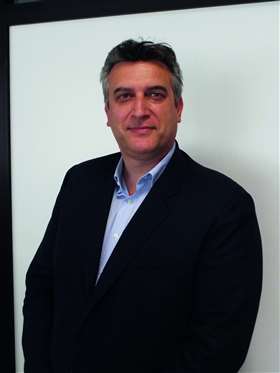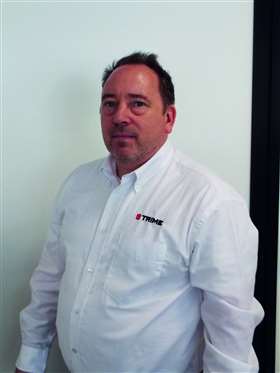Interview: Trime targets US
09 August 2019
It is a good time to be a lighting tower manufacturer, according to Trime’s Director and General Manager Andrea Fontanella. The reasons are threefold.

Speaking exclusively with IRN, he says, “The rental market is fantastic all over the world because since the 2008 crisis, the mindset of construction organisations has moved more and more towards rental, to be more flexible, with less capital investment. It gives them more opportunities to take projects that they would not otherwise be able to do because of the high investment required in purchasing all the necessary equipment.”

The second reason is that lighting towers are particularly suitable for rental because, Fontanella says, “Lighting towers can be very seasonal”. If a contractor were to own its own lighting towers, they are likely to have a low utilisation rate. As a result, about 90% of Trime’s lighting tower sales are to rental companies.
Thirdly, the demand for lighting towers is growing. Also speaking with IRN, Paul Hay, Managing Director of Trime UK, says, “The main factors are health and safety, the desire for increased productivity and the need for greater security.” And the umbrella over them all is the requirement to be more environmentally sustainable.
Although rental companies would prefer to keep things simple by standardising the machines in their fleets, Hay says, “They’re having to react to the demands of their evolving customers”; contractors are increasingly required to meet stringent CO2 emissions limits set by tenders.
Fontanella says, “From a legislation point of view, we have a great advantage investing in this type of equipment. We are following the trend a little – and it is a real trend – and that is why we are pushing this line of environmental products.”
Trime’s ‘green line’ is very much the company’s focus; “If it’s not sustainable, if it’s not got an advantage environmentally, then it’s not really something that we’re promoting,” says Hay.
With the growing relevance of sustainability, Trime sees an opportunity to push its products in the US.
“Today we are more a European platform. Our core business today is represented by Europe, but from last year and this year, the US will represent a big portion of our growth. Of all the markets, the US is definitely the biggest market for us in terms of growth for 2019. The potential is enormous,” says Fontanella.
US growth
Trime sold about 700 units in the US in 2018; this year, it is aiming to double that. Its official distributor – appointed in 2017 – is FTG Equipment, which is based in Delaware.
Trime launched its X-Smart model onto the US market at the 2018 ARA Show; “Trime’s X-Smart product is so far removed from traditional and old-fashioned US machines, most of which still have a horizontal to vertical laydown mast system,” says Fontanella.
The X-Smart has a hydraulic mast, four 320W high -efficiency LED heads, a 175 litre fuel tank and DSE 401 c/w timer settings.

Then this year, at the 2019 ARA Show, Trime launched four new models from its ‘green line’ onto the US market: the X-Battery, X-Solar Hybrid, X-Box and X-City. Fontanella says, “Specifically for the US, these models bring unique features like an EPA engine, UL certified electrical components, a specific road tow trailer suitable for the US market, and a 120V power pack.”
The equipment is being assembled in Italy and exported to the US, where the manufacturer is targeting both small- to medium-size companies and large national players in the US, including Sunbelt and Cat rental stores.
Of course, Trime is competing with a number of big lighting tower suppliers in the US, such as Allmand, Atlas Copco, Terex and Wacker Neuson, but Fontanella says Trime’s moderate size gives it the advantage of being agile, able to respond to customer demands and even develop products directly with them; “Our culture is to listen to what the customer wants and from there we develop new products.”
He adds, “The big organisations are more rigid because it is a very long process. We are more in the middle and are very flexible from this point of view, and we recognise that has big value for us.”




